Biomedical Engineering Symposium proves how technology can advance health care
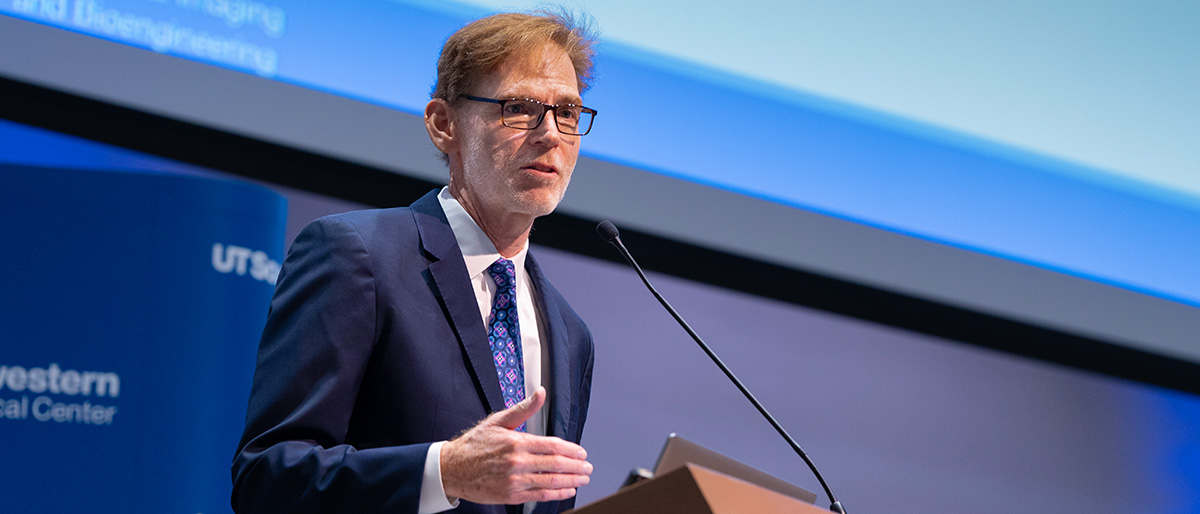
The COVID-19 pandemic led to a fundamental change in biomedical engineering that put diagnosis directly into the hands of patients themselves, the nation’s head of biomedical engineering told scientists and biomedical engineers gathered last month on UT Southwestern’s South Campus.
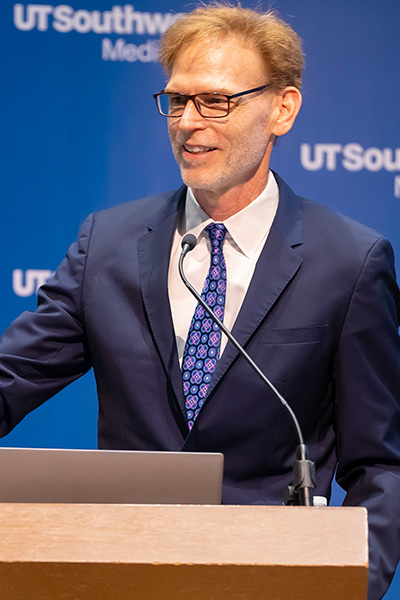
The fast development of home detection tests required shifting how new technology is funded, guided, and approved, said Bruce Tromberg, Ph.D., Director of the National Institute of Biomedical Imaging and Bioengineering (NIBIB). Dr. Tromberg was the keynote speaker at UT Southwestern’s symposium “Biomedical Engineering Solutions to Medical Challenges in the 21st Century.”
In early 2020, engineers wanted to create home tests, while many public health officials opposed them, instead suggesting they stay in medical offices, he said. Their view was that people wouldn’t use tests correctly, and having labs control the results would mean better reporting to public health officials.
“There was built into our health care system a very paternalist view of how to deal with a fast-moving situation,” Dr. Tromberg said. “We wanted over-the-counter … so people could test and decide for themselves.”
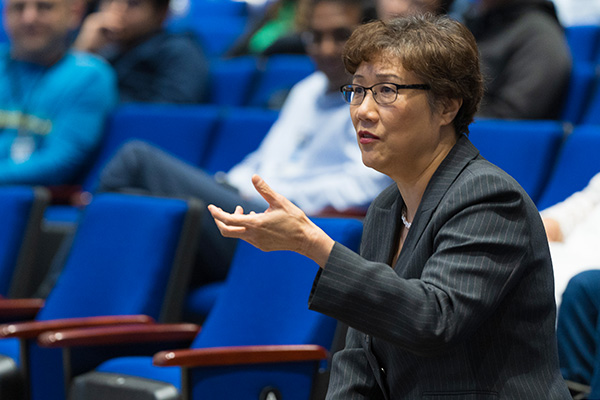
But the National Institutes of Health unit forged ahead, starting an accelerated program that received funding in weeks instead of the usual months. Coupled with fast approval by the Food and Drug Administration, the program eventually led to about 2.5 billion tests a year being distributed.
“That’s really changed what we expect from the health care system,” he said.
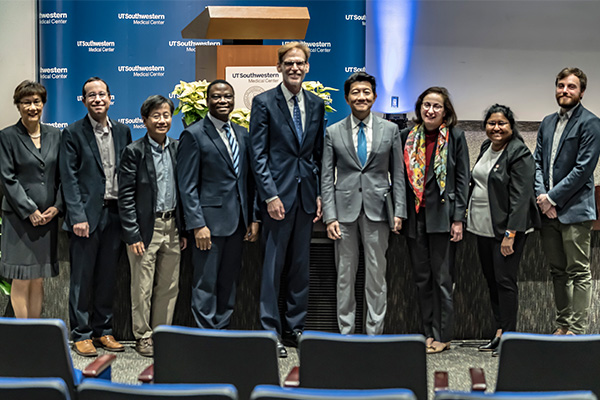
In contrast, he said, over-the-counter home tests for pregnancy number about 8 million a year.
Technology related to fighting COVID-19, including vaccines, is just part of the immense growth in biomedical engineering that has taken place in the 21st century, Dr. Tromberg said. “We never expected BME to be growing at this speed and scale. … Human health has become a priority of engineering.”
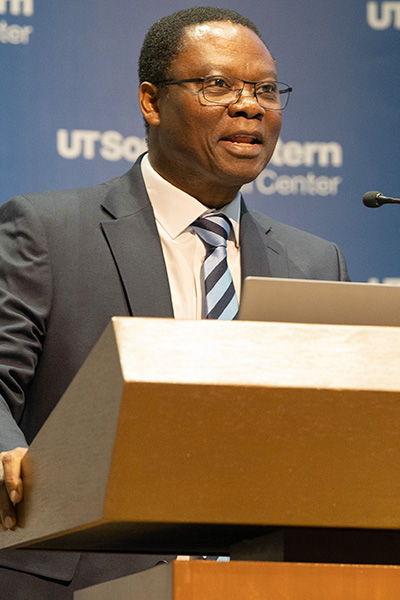
Other recent biomedical engineering advances include implantable pacemakers, fingertip pulse oximeters, medical imaging systems, and deep brain stimulation technology, he added. A major need now being tackled is artificial intelligence that can scan and identify diseases from medical images, for which NIBIB created the Medical Imaging and Data Resource Center (MIDRC), a repository of images for training AI recognition.
The symposium was sponsored by UTSW’s new Department of Biomedical Engineering, which is located in the recently dedicated Texas Instruments Biomedical Engineering and Sciences Building on East Campus. The Department is led by inaugural Chair Samuel Achilefu, Ph.D.
UTSW’s Biomedical Engineering Ph.D. Program is directed by W. Matthew Petroll, Ph.D., Professor of Ophthalmology and Biomedical Engineering. This BME Program also has joint training programs in collaboration with UT Southwestern Medical School (M.D./Ph.D.) and with UT Dallas and UT Arlington (Ph.D.). Engineers from all three participating UT campuses spoke at the event.
“Biomedical engineers should simply be called problem-solvers,” Dr. Achilefu noted, relating a comment often stated by Nobel Laureate Michael S. Brown, M.D., Director of the Erik Jonsson Center for Research in Molecular Genetics and Human Disease and Professor of Internal Medicine. “We’re not afraid of challenges.”
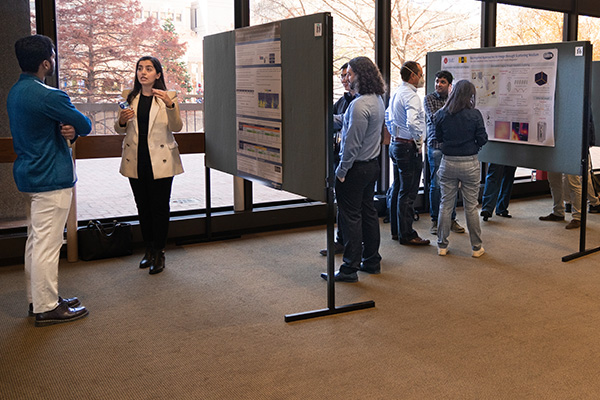
Other speakers and their topics included:
- Samir Parikh, M.D., Professor of Internal Medicine at UTSW, “Kidney Medicine: Opportunities for Technology To Impact Global Health”
- Lina Chalak, M.D., Professor of Pediatrics and Interim Chief of the Division of Neonatal-Perinatal Medicine at UTSW, “New Horizons for Neonatal Asphyxia: A Physician-Scientist Journey at UTSW”
- Isaac Pence, Ph.D., Assistant Professor of Biomedical Engineering at UTSW, “Engineering and Monitoring the Kidney: Technology-Driven Strategies to Address Kidney Disease”
- Daniel Siegwart, Ph.D., Professor of Biomedical Engineering and Biochemistry at UTSW, “The Present and Future of mRNA Lipid Nanoparticles (LNPs): From COVID-19 Vaccines to Selective Organ Targeting (SORT) Tissue Specific Disease Therapies”
- Shalini Prasad, Ph.D., Professor and Head of Biomedical Engineering at UT Dallas, “Noninvasive Tracking Host Inflammatory Response Due to Infection and Chronic Disease”
- Hanli Liu, Ph.D., Professor of Bioengineering at UT Arlington, “Biomedical Engineering Roles to Assist Biomedicine: Early Detection and Treatment for Neurological Diseases”
Dr. Achilefu holds the Lyda Hill Distinguished University Chair in Biomedical Engineering.
Dr. Brown, a Regental Professor, holds The W.A. (Monty) Moncrief Distinguished Chair in Cholesterol and Arteriosclerosis Research, and the Paul J. Thomas Chair in Medicine.
Dr. Chalak holds The William Buchanan Chair in Pediatrics.
Dr. Parikh holds the Robert Tucker Hayes Distinguished Chair in Nephrology, in Honor of Dr. Floyd C. Rector, Jr., and the Ruth W. and Milton P. Levy, Sr. Chair in Molecular Nephrology.
Dr. Petroll holds the Dr. W. Maxwell Thomas Chair on Ophthalmology.
Dr. Siegwart holds the W. Ray Wallace Distinguished Chair in Molecular Oncology Research.

